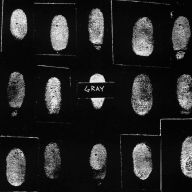Shades Of... Gray Artist
Usually, when a renowned band gets back together, the group is revisiting a substantive recorded legacy known intimately by its listeners. {|Gray|}'s case, however, is an unusual one, in that their reunion album also happens to be their debut album. ...
Read more
Usually, when a renowned band gets back together, the group is revisiting a substantive recorded legacy known intimately by its listeners. {|Gray|}'s case, however, is an unusual one, in that their reunion album also happens to be their debut album. {|Gray|} were a part of New York's no wave underground scene in the early '80s, and while best known for having included the late, now-legendary visual artist {|Jean-Michel Basquiat|} (and at one point, actor/director {|Vincent Gallo|}), they created a sound that was way ahead of its time, even when compared to the groundbreaking efforts of their adventurous peers. But the short-lived band never released a record in its initial period of activity; a couple of tracks that eventually surfaced on the soundtrack to the {|Basquiat|}-starring film Downtown 81 are all that the original {|Gray|} left behind. After {|Basquiat|}'s death, his old bandmates reconvened to play at his memorial, and subsequently began working on new music. Finally, three decades after their relative heyday, {|Gray|} have released an album, {|Shades Of...|}, which embarks on new sonic explorations using a similar sonic palette to that of their early work. That palette includes a rather dizzying array of colors, encompassing hip-hop, ambient atmospheres, industrial sounds, minimalism, art funk, moody post-punk, jazzy guitars, spoken word, and even pop. The results may not sound as revolutionary in the 21st century as {|Gray|}'s similar-sounding early-'80s music did, but it's clear that the band quietly prefigured everything from post-rock to electronica, even though hardly anyone ever realized it. The original lineup is not completely unrepresented here either -- though most of the tracks were recorded in the '90s and 2000s, the 1981 cut {|Drum Mode|} is included, as are some samples of {|Basquiat|}, which are reworked into an album that revisits a short, special window in New York's cultural history but somehow manages to sound strangely timeless. ~ J. Allen
Less





